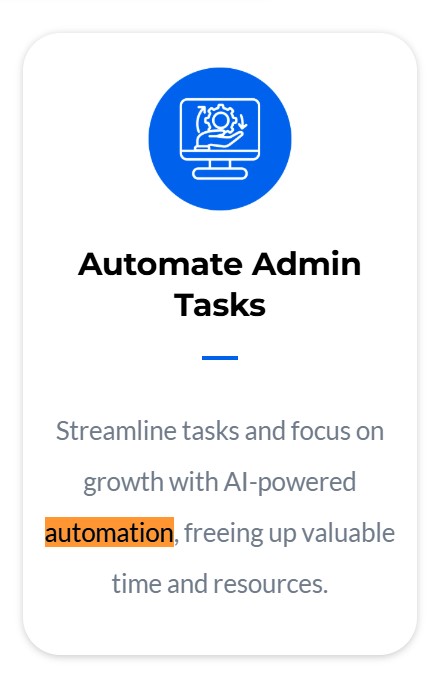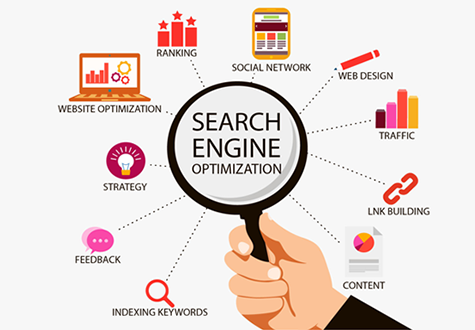How Cutting-Edge Automation Can Streamline Your Business Operations
In today’s fast-paced business world, efficiency is key. Companies that can streamline their operations not only save time but also boost productivity and reduce costs. One of the most powerful ways to achieve this is through cutting-edge automation. By embracing the latest technologies, businesses can transform their day-to-day processes, improve customer experiences, and stay ahead of the competition.
What is Cutting-Edge Automation?
Cutting-edge automation refers to the use of advanced technologies, like artificial intelligence (AI), machine learning, robotics, and Internet of Things (IoT), to automate various business processes. These tools go beyond simple task automation—they can analyze data, make decisions, and even predict future trends. As a result, businesses can automate repetitive tasks with greater precision, improve workflows, and free up human employees for more complex and creative work.
Some popular cutting-edge automation technologies include:
- AI-powered tools for customer service (like chatbots) and predictive analytics.
- Robotic Process Automation (RPA) for repetitive administrative tasks such as data entry or invoice processing.
- IoT sensors that monitor inventory and automatically trigger stock reorders.
Benefits of Cutting-Edge Automation for Businesses
1. Improved Efficiency and Productivity
Automation is all about efficiency. By automating repetitive and time-consuming tasks, businesses can free up their employees to focus on higher-value activities. For example, automated workflows can handle scheduling, data entry, and routine customer inquiries, while employees can work on strategic projects that drive growth. With automation, you can significantly reduce human error, speed up processes, and boost overall productivity.
2. Cost Reduction
Implementing automation can save businesses a significant amount of money. By reducing the need for manual labor, companies can cut down on payroll costs while still improving the output. Additionally, automation reduces errors, which can lead to costly corrections and delays. Whether it’s automating billing, inventory management, or customer service, automation ensures consistency and accuracy, which translates into substantial savings.
3. Faster Decision-Making
In today’s competitive market, quick decision-making is crucial. Automation can provide businesses with real-time data, which helps managers make informed decisions faster. For instance, AI-driven analytics tools can analyze sales data, predict customer behavior, and provide insights into product performance. This quick access to actionable data can drive more timely and effective decisions, allowing companies to stay agile and responsive to market demands.
4. Better Customer Experiences
Today’s customers expect fast, personalized service. Cutting-edge automation can help businesses meet these expectations by delivering quick responses and tailored experiences. AI-powered chatbots, for example, can answer customer inquiries 24/7, providing instant assistance for common questions and issues. Automated systems can also personalize marketing efforts, targeting customers with relevant content and product recommendations based on their past interactions.
Key Areas of Business Operations That Benefit from Automation
1. Sales and Marketing
Automation tools like CRM software and marketing automation platforms allow businesses to streamline lead generation, nurturing, and follow-ups. Automated email campaigns can be tailored to specific customer segments, while social media scheduling tools can ensure that posts go live at optimal times. These solutions save time and provide consistent, personalized communication with customers, driving higher engagement and conversions.
2. Finance and Accounting
Finance departments can benefit immensely from automation. Tasks like invoice processing, expense tracking, and payroll can be automated to save time and reduce errors. RPA tools can handle repetitive tasks such as data entry, account reconciliation, and financial reporting, ensuring accuracy and freeing up accountants for strategic work. Automated financial systems also improve compliance by tracking regulatory changes and ensuring reports are accurate and timely.
3. Human Resources
Automation can simplify HR functions, from recruitment to employee management. Automated applicant tracking systems can screen resumes, schedule interviews, and even send out offer letters. Once hired, new employees can undergo automated onboarding processes that include document collection, training schedule, and policy acknowledgment. HR automation reduces administrative workload, helping HR teams focus on employee engagement and retention strategies.
4. Supply Chain and Inventory Management
Automation plays a pivotal role in supply chain management. IoT sensors can track inventory levels in real time and automatically place orders when stock is low. This reduces the risk of stockouts and overstocking, optimizing inventory management. Additionally, automation tools can track shipments, monitor supplier performance, and predict demand trends, ensuring that businesses always have the right products available at the right time.
5. Customer Service
Automated customer service tools, such as AI-powered chatbots, can handle routine customer inquiries, freeing up human agents to focus on more complex issues. Automated ticketing systems ensure that customers’ concerns are logged, prioritized, and addressed promptly. Additionally, businesses can use automation to provide self-service options, allowing customers to find answers to common questions or complete transactions without needing to speak to a representative.
Overcoming the Challenges of Adopting Automation
While automation offers significant benefits, it’s important to address potential challenges during adoption. One of the biggest hurdles is the initial investment in automation tools. Businesses should carefully evaluate the ROI of implementing automation solutions. Start with processes that offer the highest impact and scalability, and measure the savings in time and costs over time.
Employee training is another consideration. Automation doesn’t necessarily eliminate jobs; it transforms roles. Employees need to be trained on new systems and technologies, allowing them to shift to more strategic tasks. A strong change management plan can help ease the transition and ensure that employees are on board with the new systems.
Finally, system integration can sometimes be a challenge. Automation tools need to work seamlessly with existing software and workflows. Businesses must choose solutions that are compatible with their current systems and plan for integration to avoid disruptions.
How to Get Started with Cutting-Edge Automation
- Assess Your Needs: Identify areas of your business that could benefit most from automation—look for tasks that are repetitive, time-consuming, and prone to human error.
- Choose the Right Tools: Research automation solutions that align with your business objectives. Consider your budget, scalability, and integration capabilities before making a decision.
- Start Small and Scale: Begin with a pilot program to test automation in specific areas. As you gain confidence, expand its use across other departments.
Conclusion
Cutting-edge automation is no longer a luxury; it’s a necessity for businesses that want to stay competitive and thrive in today’s fast-paced market. By automating key operations, companies can improve efficiency, reduce costs, and enhance customer experiences. While the initial investment and learning curve may present challenges, the long-term benefits far outweigh the costs. If you’re ready to streamline your business operations, now is the time to explore how automation can take your company to the next level.
Start small, think big, and let cutting-edge automation revolutionize your business!













Post Comment